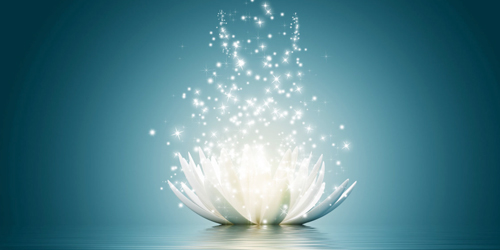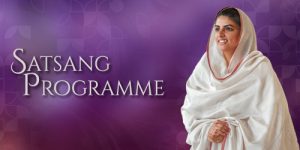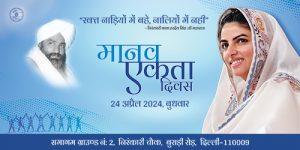As human beings, we are the only creatures with an innate capacity to fully recognise and realise ourselves, both materially and spiritually. But it is ironic that throughout our lives, we concentrate on the body and the mind, the material, at the expense of the spiritual. Such a process is conducive to losing our Self, the constant Self, depriving ourselves of stability and equipoise. It is for this reason that the question of finding the Self crops up. I’ve attempted in this article to explore the Self and offer some elaboration as to who or what I am not. Sometimes discarding what is untrue, leads to the unfolding of what endures.
The Mind
Cognitive Behavioural Therapy (CBT) is a growing trend in mental health provision, which tells us that the way we think influences the way we feel and behave. Recursively, our daily experiences reflect the internal working beliefs and assumptions we hold about ourselves, others, and the world, which then influences the choices we make consciously or subconsciously. From a very young age, we develop understandings through interaction with our environment, which leads to sensory and information processing – i.e. constructing and encoding the information or experience of the world around us. This information builds a context by which we understand the situation in front of us, which over time influences behaviour. But it is also the case that our behaviour in turn, shapes the context of our lives. We begin to learn that the world is not just an objective constant that we observe, but it is also subject to change and influence (i.e. we are part of the observation, we are observing!). To illustrate, as babies we process the voice of our Mother as a precursor to receiving some comfort, but through experience we learn that crying, smiling or making playful noises elicits the parental comfort we are seeking. In other words, we use signals from the world around us, to change our experience, the environment and people in it.
In addition, our emotional states or mental concepts are shaped by how we voice or describe our experiences. For example, we may describe ourselves as a nice person, a horrible person and so forth. The stories we tell about ourselves (or the stories we are told by others about how they see us) builds up our behavioural habits and feelings. The mind intelligently shapes how we understand and see ourselves. Our memories, and things we see and hear as children, influence the people we become and the society or culture we build. A child who is always condemned as being lazy, will probably act in ways that confirm the description whereas someone encouraged more positively is likely to become a motivated and confident young person, who likes to achieve.
The great thing is that whatever stories we were told, or inherited as self-beliefs, are not fixed and immovable. The internal narratives that are created, especially but not exclusively in childhood, are constantly being updated. With the right conditions, we can transform the beliefs we have inherited and accepted. For example, while growing up we may have believed in Santa Claus, but as adults we appreciate that gifts come from those who love us, not a somewhat hearty man dressed in red! We may have hated the taste of ginger or fruit, but as adults we may have developed a taste for it. Such updates are happening every single day – every moment, in fact. Our nature is constantly changing, although there are sometimes elements of our personality structure that are more stubbornly fixed.
The Body
Our senses also play a role in influencing the sort of world we experience. Through sense modalities spread across the whole physical body, we are able to hear sounds, smell fragrances, taste foods, see colours, and experience the shape or texture of things. Our senses literally bring life to our world. However, these are still limited energies that draw on our physical world, allowing access only to that which is tangible. The more subtle aspects of the universe are not readily accessible to us. There are for example sounds at particular frequencies that dogs can hear but are inaudible to us. Further, there is no blue canopy of sky in the objective sense, but the manner in which sunlight refracts though the gases and particles in the earth’s atmosphere causes us to see blue all around. What is more, one person’s description of any particular colour or taste may be contrary to that of another. Hence, limitations are always there. I know this because I cannot hear the conversations in the house next door; I can only hear as far as my living room – as far as my sense organs reach.
Dr Deepak Chopra’s1 words ‘you are not in the world; the world is in you’ illustrate the limited sensual reality within the Infinite. Rocks seem to be solid only because the brain registers electrical signals as touch. When the sun shines, the brain registers another electrical signal as sight. Our settled beliefs, combined with strong sense perceptions, often allow no room for soul searching. Our mind and body’s construct of the material world convinces us enough to accept it as the ultimate reality, when really it is not.
Maya
As we grow in awareness, we realise that the world as we experience it is illusory. This illusion is called Maya within scriptural testimonies of the east. It is deceptive, ephemeral and superficial. The mind is also a part of this Maya. Contrary to the Cartesian thought, ‘I think therefore I am’, our thinking does not represent infinite reality. Our thoughts are quite simply projections of internal functions, and echoes of the information we have previously gathered and stored. Our sensory perceptions only extend as far as the limitations of the instruments we use to experience them – just because we can’t see, hear or feel something with the physical body, it does not mean it does not exist.
The way out of this limited reality is to access a dimension of unlimited connections, starting with the Source of all creations and connections. This is where the Brahm Gyan, the Knowledge of the All-Pervading, proves to be instrumental in discovering who we really are. In making this connection, we not only find our Self, but also the universal energy, Nirankar, that animates every single particle of existence. Call it the Super-Self, God, Awareness, Supreme Consciousness or whatever you will.
Baba Hardev Singhji, the fourth in the lineage of Nirankari Mentors, used to tell us that we can only rise above our bodily identities of class, colour, creed, gender, religion, nation or language by knowing our real, infinite Source. In so doing, we change as human beings. We realise that ‘we are not physical beings having a spiritual experience; we are spiritual beings having a physical experience’. We become still, and resort to the Infinite Self.
Once we recognise and realise the sheer magnitude of our real identity, we begin to experience connections that were previously closed to us. We begin to appreciate that the same reality animates those around us. When we are in tune with this awareness, we are able to build a more harmonious world. Our diverse viewpoints or lifestyles no longer need to clash. We give life to our soul and transcend the finitude of our materialistic self. In so doing, we also rise above judgement. We begin to see the bigger picture, to experience our Self in an infinite way. We recognise that the Self, hidden below the manifold layers of the self is our real essence, which is no different to the essence of God.
The answer to who or what we are not is that we are not the mind, body or any other material identity. We are the Self, the Divine in all its glory, which was, is, and will always be.
– Harishta Kaur, Huddersfield, UK
.








